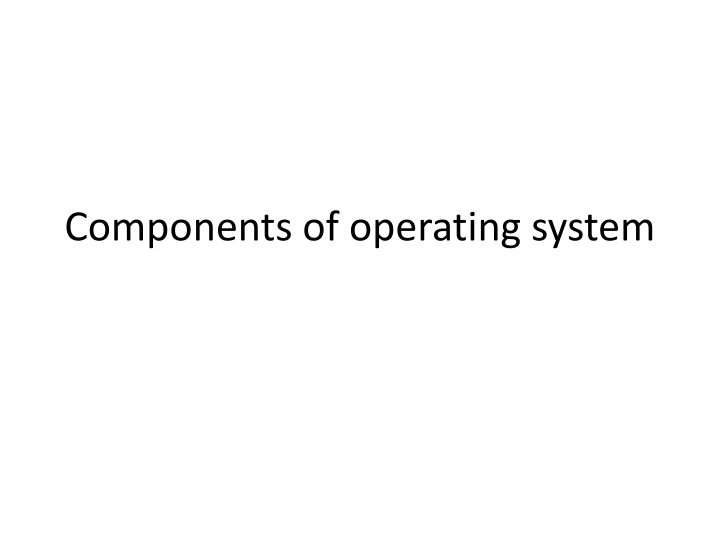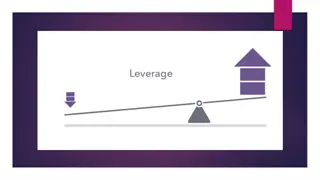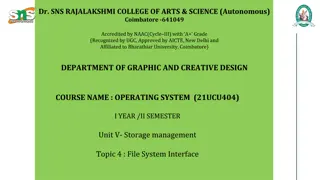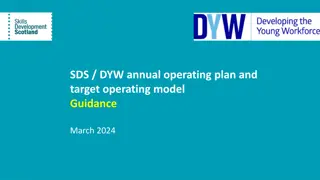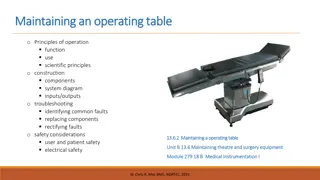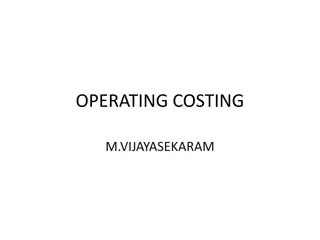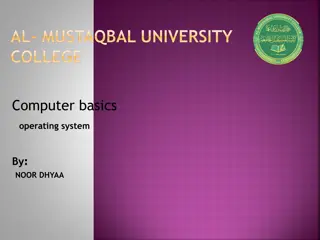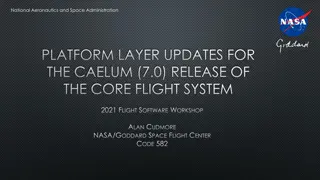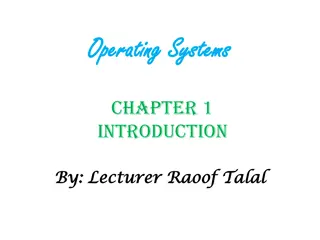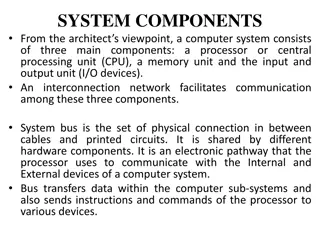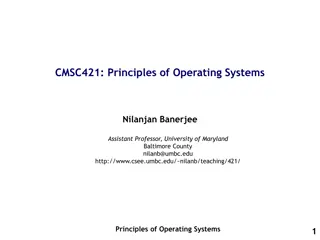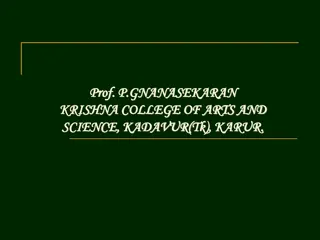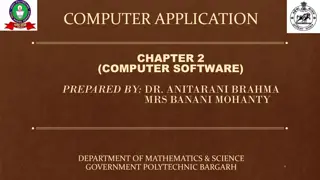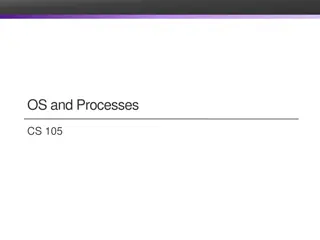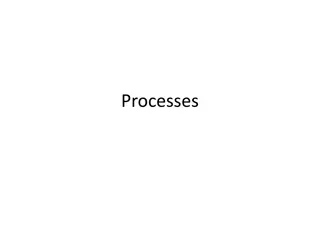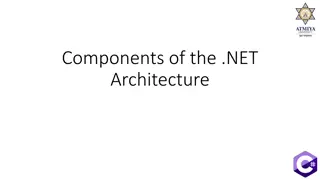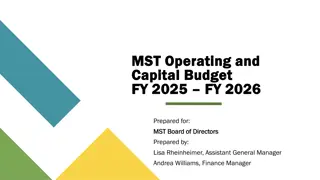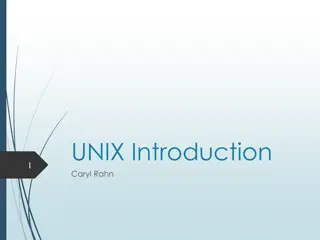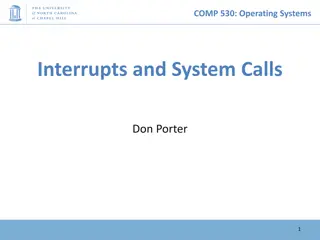Components of operating system
The operating system consists of four main components: hardware, operating system software, application programs, and the user. The hardware includes the CPU, memory, and I/O devices, providing basic computing resources. Application programs define how these resources are utilized, such as spreadsheets and web browsers. The operating system controls hardware operations and coordinates resources among various programs and users. It can be viewed as a resource allocator and provides services for programs and users to execute efficiently.
Download Presentation

Please find below an Image/Link to download the presentation.
The content on the website is provided AS IS for your information and personal use only. It may not be sold, licensed, or shared on other websites without obtaining consent from the author.If you encounter any issues during the download, it is possible that the publisher has removed the file from their server.
You are allowed to download the files provided on this website for personal or commercial use, subject to the condition that they are used lawfully. All files are the property of their respective owners.
The content on the website is provided AS IS for your information and personal use only. It may not be sold, licensed, or shared on other websites without obtaining consent from the author.
E N D
Presentation Transcript
Components of operating system Four components The hardware The operating system The application programs And the user The hardware the central processing unit(CPU),the memory , and the input/output(I/O) devices provides the basic computing resources for the system. The application programs-such spreadsheets , compilers , and web browsers-define the ways in which these resources are used to solve users computing problems. as word processors ,
The operating system controls the hardware and coordinates its use among the various application programs for the various users. We can also view a computer system as consisting of hardware , software ,and data. The operating system provides the means for proper use of these resources in the operation of the computer system.
Two Views of Operating System User's View System View
Operating System: User View The user view of the computer refers to the interface being used. Such systems are designed for one user to monopolize its resources, to maximize the work that the user is performing. In these cases, the operating system is designed mostly for ease of use, with some attention paid to performance, and none paid to resource utilization.
Operating System: System View Operating system can be viewed as a resource allocator also. A computer system consists of many resources like - hardware and software - that must be managed efficiently. The operating system acts as the manager of the resources, decides between conflicting requests, controls execution of programs etc.
Operating system services An Operating System provides services to both the users and to the programs. It provides programs an environment to execute. It provides users the services to execute the programs in a convenient manner.
Following are a few common services provided by an operating system Program execution I/O operations File System manipulation Communication Error Detection Resource Allocation Protection
Program execution Operating systems handle many kinds of activities from user programs to system programs like printer spooler, name servers, file server, etc. Each of these activities is encapsulated as a process. A process includes the complete execution context (code to execute, data to manipulate, registers, OS resources in use).
Following are the major activities of an operating system with respect to program management Loads a program into memory. Executes the program. Handles program's execution. Provides a mechanism for process synchronization. Provides a mechanism for process communication. Provides a mechanism for deadlock handling.
I/O Operation An I/O subsystem comprises of I/O devices and their corresponding driver software. Drivers hide the peculiarities of specific hardware devices from the users. An Operating System manages the communication between user and device drivers. I/O operation means read or write operation with any file or any specific I/O device. Operating system provides the access to the required I/O device when required.
File system manipulation A file represents a collection of related information. Computers can store files on the disk (secondary storage), for long-term storage purpose. Examples of storage media include magnetic tape, magnetic disk and optical disk drives like CD, DVD. Each of these media has its own properties like speed, capacity, data transfer rate and data access methods.
Program needs to read a file or write a file. The operating system gives the permission to the program for operation on file. Permission varies from read-only, read-write, denied and so on. Operating System provides an interface to the user to create/delete files. Operating System provides an interface to the user to create/delete directories. Operating System provides an interface to create the backup of file system.
Communication In case of distributed systems which are a collection of processors that do not share memory, peripheral devices, or a clock, the operating system manages communications between all the processes. Multiple processes communicate with one another through communication lines in the network. The OS handles routing and connection strategies, and the problems of contention and security.
Following are the major activities of an operating system with respect to communication Two processes often require data to be transferred between them Both the processes can be on one computer or on different computers, but are connected through a computer network. Communication may be implemented by two methods, either by Shared Memory or by Message Passing.
Error handling Errors can occur anytime and anywhere. An error may occur in CPU, in I/O devices or in the memory hardware. Following are the major activities of an operating system with respect to error handling The OS constantly checks for possible errors. The OS takes an appropriate action to ensure correct and consistent computing.
Resource Management In case of multi-user or multi-tasking environment, resources such as main memory, CPU cycles and files storage are to be allocated to each user or job. Following are the major activities of an operating system with respect to resource management The OS manages all kinds of resources using schedulers. CPU scheduling algorithms are used for better utilization of CPU.
Protection Considering a computer system having multiple users and concurrent execution of multiple processes, the various processes must be protected from each other's activities. Protection refers to a mechanism or a way to control the access of programs, processes, or users to the resources defined by a computer system.
Following are the major activities of an operating system with respect to protection The OS ensures that all access to system resources is controlled. The OS ensures that external I/O devices are protected from invalid access attempts. The OS provides authentication features for each user by means of passwords.
